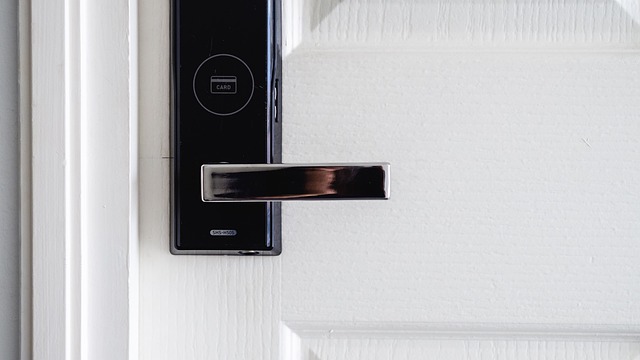Securing large rural properties requires advanced, tailored solutions addressing unique challenges like extended emergency response times and isolation. Wireless and solar-powered security systems offer remote access and control via smartphones, eliminating unsightly wires and saving costs. Equipped with long-range motion detectors and outdoor cameras, these smart security solutions provide 24/7 surveillance, instant alerts, and comprehensive protection for rural homes, ideal for isolated regions with limited power access.
In the vast and often isolated landscapes of rural areas, securing a large property presents unique challenges. Traditional security measures may not be sufficient to deter intruders or detect threats promptly. This article explores how perimeter alarms, particularly wireless and solar-powered systems, revolutionize home security for rural areas. We delve into essential components like outdoor cameras and long-range motion detectors, offering effective solutions tailored to the specific needs of remote homes, enhancing peace of mind for rural residents.
- Understanding the Challenges of Rural Home Security
- The Benefits of Wireless and Solar-Powered Systems
- Essential Components for a Smart Rural Security Network
- Protecting Large Properties with Outdoor Cameras and Motion Detectors
Understanding the Challenges of Rural Home Security

Securing a large rural property presents unique challenges that require tailored solutions. Unlike urban settings with nearby neighbors and established security infrastructure, remote locations can mean extended response times for emergency services and fewer eyes on potential threats. The vast open spaces and isolated nature of these properties offer potential intruders ample time to explore without detection.
Addressing rural home security involves a combination of advanced technology and strategic placement. Implementing wireless security systems equipped with long-range motion detectors and outdoor cameras is essential for early intrusion detection. Solar-powered components not only ensure reliability in remote areas but also contribute to eco-friendly security solutions. Smart security features allow property owners to monitor their homes remotely, receive instant alerts, and even integrate these systems into larger home automation networks for comprehensive protection.
The Benefits of Wireless and Solar-Powered Systems

Wireless and solar-powered systems offer a revolutionary approach to securing large rural properties, addressing the unique challenges faced by remote homes. In terms of home security for rural areas, these innovative solutions provide several advantages over traditional wired systems. One of the key benefits is their accessibility; wireless security for remote homes allows property owners to monitor and control their security from virtually anywhere, using smartphones or other devices. This feature is particularly valuable for those living in isolated regions with limited physical access to their properties.
Additionally, solar-powered security systems are an eco-friendly option that can be crucial in areas without reliable grid electricity. By harnessing solar energy, these systems offer long-term cost savings and reduced environmental impact. Outdoor cameras for rural areas equipped with long-range motion detectors provide enhanced visibility and early warning of potential intruders or wildlife, ensuring the safety and security of smart security for rural properties. This technology is a game-changer in securing vast landscapes, offering both peace of mind and efficient prevention against unwanted visitors.
Essential Components for a Smart Rural Security Network

Securing a large rural property requires a robust and intelligent approach to home security for rural areas. A smart security system tailored for remote locations should incorporate several key components to ensure comprehensive protection. One of the fundamental elements is wireless security for remote homes, eliminating the need for cumbersome wires that can disrupt the landscape.
Additionally, outdoor cameras for rural areas play a vital role in surveillance, providing clear visuals and footage of any unusual activity. Long-range motion detectors are another essential tool, as they can detect movement from far distances, ensuring every corner of the property is monitored. Solar-powered security systems are an eco-friendly option, offering independence from power grids and proving particularly useful in remote locations where access to electricity may be limited. These smart security solutions for rural properties contribute to a safe and peaceful environment, giving homeowners peace of mind.
Protecting Large Properties with Outdoor Cameras and Motion Detectors

Securing a vast rural property presents unique challenges that require robust and innovative solutions. One effective strategy to enhance home security for rural areas is implementing outdoor camera and motion detector systems. These smart security tools are particularly beneficial for remote homes, offering peace of mind and advanced protection against potential intruders.
Wireless security for remote locations has never been more accessible with the advent of solar-powered cameras and motion sensors. These devices provide 24/7 surveillance capabilities, capturing clear footage and alerting homeowners instantly via their smartphones when any unusual activity is detected. Long-range motion detectors can cover expansive grounds, ensuring every corner of the rural property is monitored. Moreover, integrating these systems allows for comprehensive coverage, from dense forests to open fields, making it a comprehensive solution for rural home security systems.
Securing large rural properties presents unique challenges, but modern technology offers innovative solutions. By combining wireless and solar-powered systems, along with strategic placement of outdoor cameras and long-range motion detectors, homeowners can create an effective yet sustainable rural home security network. These smart security measures provide peace of mind, ensuring that remote homes and vast landscapes remain protected against potential threats.
